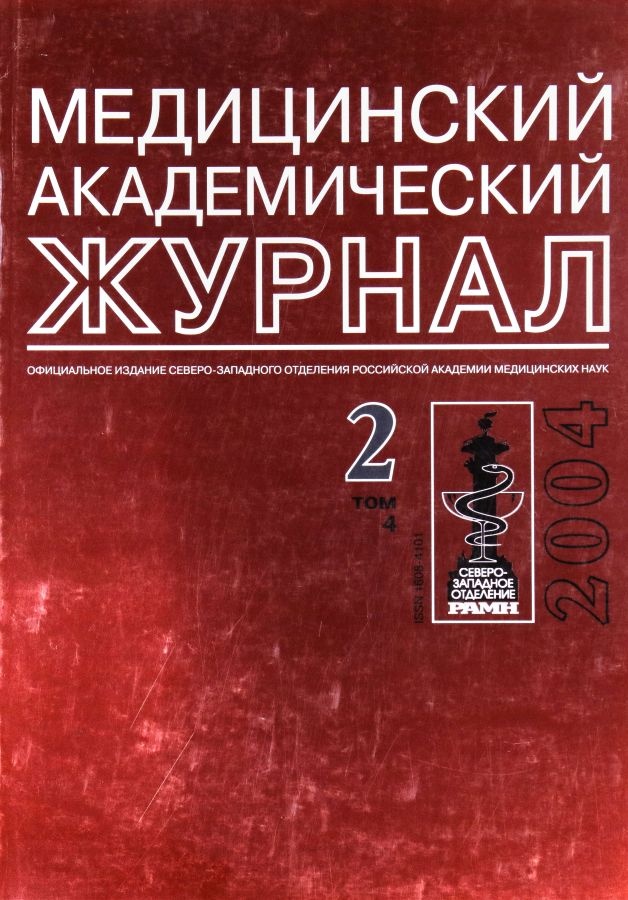Личностные отношения больных ВИЧ-инфекцией в динамике заболевания
- Авторы: Литвиненко Ю.А.1,2, Улюкин И.М.1,2, Лобзин Ю.В.1,2
-
Учреждения:
- Санкт-Петербургский центр профилактики и борьбы со СПИДом
- Республиканская клиническая инфекционная больница
- Выпуск: Том 4, № 2 (2004)
- Страницы: 80-86
- Раздел: Клиническая медицина
- Статья опубликована: 15.06.2004
- URL: https://journals.eco-vector.com/MAJ/article/view/692933
- ID: 692933
Цитировать
Полный текст
Аннотация
Нами была изучена гармоничность системы отношений больных ВИЧ-инфекцией по методике «Незаконченные предложения». Группу исследования составили 103 больных ВИЧ-инфекцией (м~1:1, возраст 18-40 лет). По результатам настоящего исследования можно сделать следующие выводы. Во-первых, заболевание ВИЧ-инфекцией является дезадаптирующим фактором и нарушает целостность всей системы отношений человека, что приводит к возрастанию нервно-психического напряжения и разрушению его социальных связей. Во-вторых, в первое время остро переживая факт инфицирования, больной может относительно адаптироваться к диагнозу, однако при значительном ухудшении самочувствия, сопровождающимся поражением нервной системы, вновь нарастает психическая дезадаптация, но обусловлена она уже личностными изменениями и снижением критики (вследствие развития психоорганического синдрома). В-третьих, несмотря на существование взаимосвязи показателей на различных стадиях и при различной длительности заболевания, при более внимательном рассмотрении выявляются различия, поэтому в каждом отдельном случае для оптимизации лечебно-диагностического и реабилитационного процесса необходимо учитывать оба эти параметра.
Ключевые слова
Об авторах
Ю. А. Литвиненко
Санкт-Петербургский центр профилактики и борьбы со СПИДом; Республиканская клиническая инфекционная больница
Автор, ответственный за переписку.
Email: shabanov@mail.rcom.ru
Россия, Санкт-Петербург, 190020, наб. Обводного канала, 179; Санкт-Петербург, 196645, пос. Усть-Ижора, Шлиссельбургское шоссе, 3
И. М. Улюкин
Санкт-Петербургский центр профилактики и борьбы со СПИДом; Республиканская клиническая инфекционная больница
Email: shabanov@mail.rcom.ru
Россия, Санкт-Петербург, 190020, наб. Обводного канала, 179; Санкт-Петербург, 196645, пос. Усть-Ижора, Шлиссельбургское шоссе, 3
Ю. В. Лобзин
Санкт-Петербургский центр профилактики и борьбы со СПИДом; Республиканская клиническая инфекционная больница
Email: shabanov@mail.rcom.ru
Россия, Санкт-Петербург, 190020, наб. Обводного канала, 179; Санкт-Петербург, 196645, пос. Усть-Ижора, Шлиссельбургское шоссе, 3
Список литературы
- Александровский Ю. А. Состояния психической дезадаптации и их компенсация. М.: Медицина, 1976. 278 с.
- Исурина Г. Л. Групповая психотерапия при неврозах (методы, психологические механизмы лечебного действия, динамика индивидуально-психологических характеристик): Дис. ... канд. психол. наук. Л., 1984. 256 с.
- Кабанов М. М., Личко А. Е., Смирнов В. М. Методы психологической диагностики и коррекции в клинике. Л.: Медицина, 1983. 312 с.
- Карвасарский Б. Д. Неврозы. М.: Медицина, 1990. 576 с.
- Кравченко А. В. Фармакоэкономические аспекты антиретровирусной терапии больных ВИЧ-инфекцией // Медицинская кафедра. 2003. №2. С. 63-67.
- Покровский В. В., Юрин О. Г., Беляева В. В. и др. Клиническая диагностика и лечение ВИЧ-инфекции. М.: ГОУ ВУНМЦ М3 РФ, 2001.96 с.
- Ластовецкий А. Г. Качество и экономическая результативность лечебной деятельности // Главврач. 2002. № 11. С. 24-26.
- Мясищев В. Н. Личность и неврозы. Л., 1960. 425 с.
- Башлыков В. А. Психология лечебного процесса. Л.: Медицина, 1984. 191 с.
- Юнкеров В. И. Основы математико-статистического моделирования и применения вычислительной техники в научных исследованиях. СПб., 2000. 140 с.
- Bartlett J. В. The 2002 abbreviated guide to medical management of HIV-infection. Baltimore: J. Hopkins University, Division of Infectious Disease, 2002. 154 p.
Дополнительные файлы






